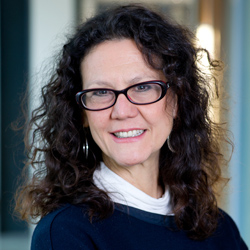Researchers Find Enzymes Naturally Select their Own Polymer Sequences
Findings could impact fields like pharmaceutical development and industrial waste processing
As free-flowing enzymes travel amid a sea of polymers, a Northwestern Engineering team has found those enzymes prefer to join certain polymer sequences over others, a discovery that could lead to applications in a diverse array of fields ranging from nuclear waste processing to drug delivery.
“From all these batches of randomness, we discovered each particular enzyme selects a sequence it likes best,” said Monica Olvera de la Cruz, the Lawyer Taylor Professor of Materials Science and Engineering at Northwestern’s McCormick School of Engineering and Applied Science, who led the study. “That’s important because it sheds light on how we might design the composition of a batch of polymers, so they will disperse enzymes actively in non-biological environments.”

Enzymes play a vital role in a range of chemical and biological processes by facilitating and directing biochemical reactions. Due to the limited solubility of some substrates in water, preserving and/or enhancing the catalytic capability of some enzymes in non-aqueous solutions is of increasing demand. However, most enzymes rapidly lose their chemical activity when exposed to non-biological environments, including organic solvents like toluene and tetrahydrofuran. While numerous enzyme stabilization strategies have been employed such as reverse engineering enzyme sequences, decorating enzymes with surfactants, or modifying the solvents, most of them are either limited to specific enzymes and solvents or cost ineffective.
Performing computer simulations at Quest, Northwestern’s high-powered computational facility, the researchers examined: the key factors that determined the coverage of the random copolymers with different types of enzymes in a given solvent; how the enzymes selected the random copolymers to protect themselves from unfavorable solvents; and the relationship between the enzyme surface characteristics and the polymer features.
“We found that the enzymes indeed select certain polymer sequences that best cover their surface out of the pool of the polymers,” Trung said. “The random copolymers provide the composition and sequence diversity similar to that in disordered enzymes, which explains why they can efficiently cover numerous enzymes in different size, shape, and surface patterns.”
The study, fueled by a grant from the US Department of Energy and support from the Sherman Fairchild Foundation that enabled the computational work, highlights that this special family of copolymers is an excellent candidate material for synthesizing membraneless organelles — the micron-sized liquid droplets inside cells of living organisms — as well as for stabilizing and delivering enzymes across multiple non-biological media.
“Right now, for instance, researchers in the pharmaceutical industry are trying to match sequences perfectly,” Olvera de la Cruz said. “Our discovery provides guidelines to make the dispersion of enzymes much more cost-effective and efficient.”
Olvera de la Cruz and her colleagues now plan to investigate how the membraneless organelles might spontaneously form with these copolymers-enzymes, how to control their sizes, and how the structural properties of the enzymes might be affected inside the organelles.
“The next step will be exploring the possibilities of concentrating different enzymes together, which is highly promising in advancing their catalytic ability, in creating new chemicals, as well as in processing industrial waste, in an efficient fashion,” Olvera de la Cruz said.